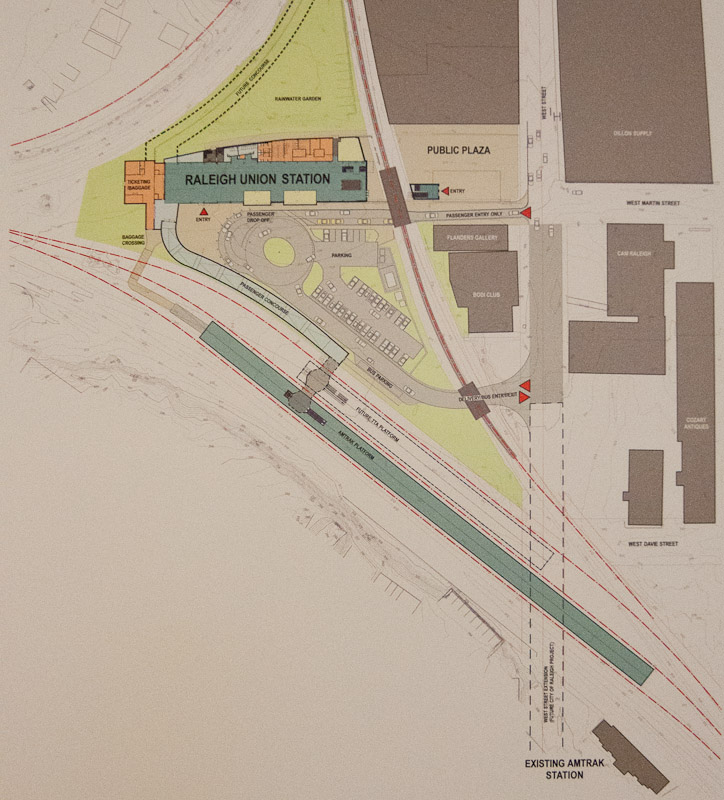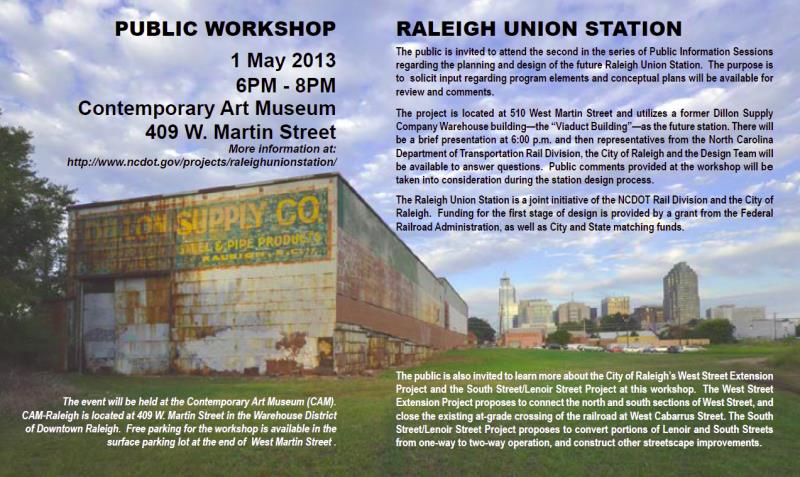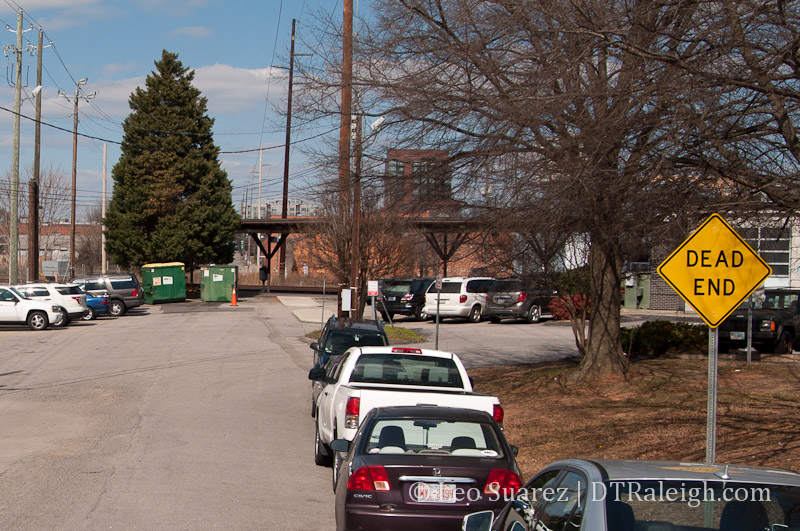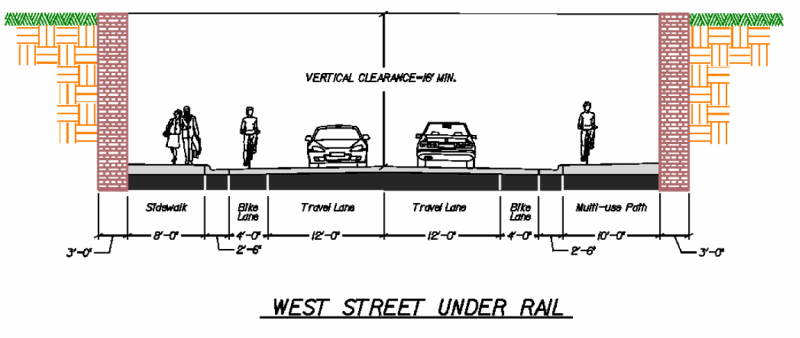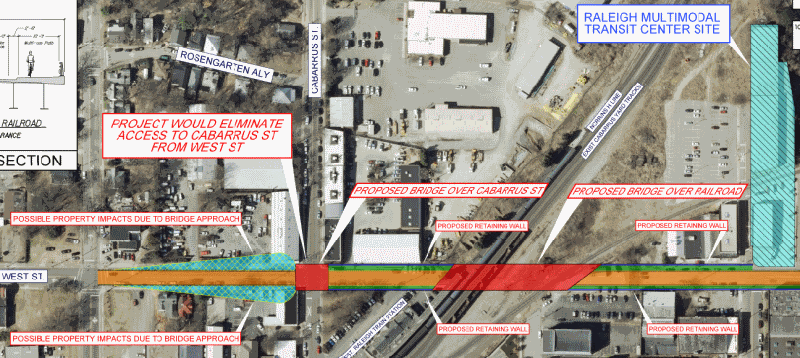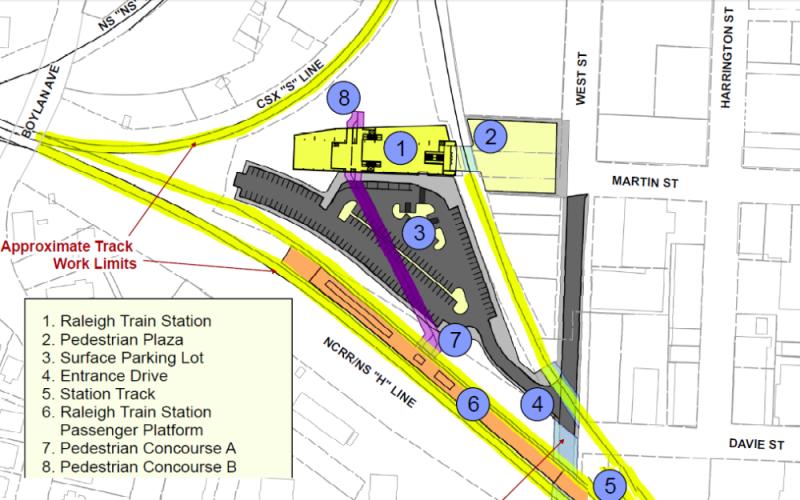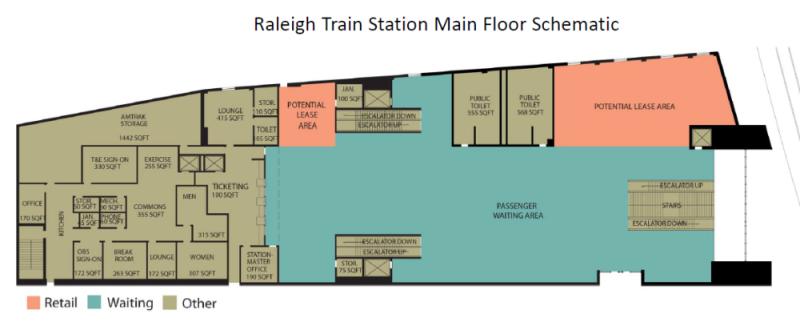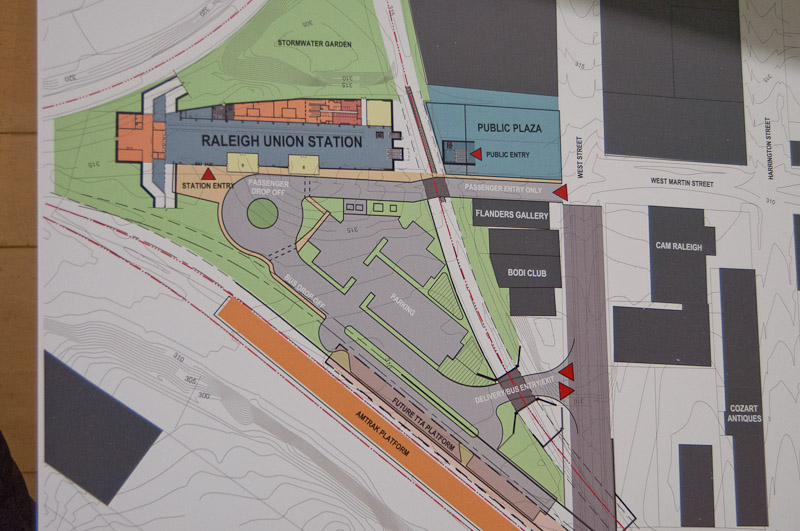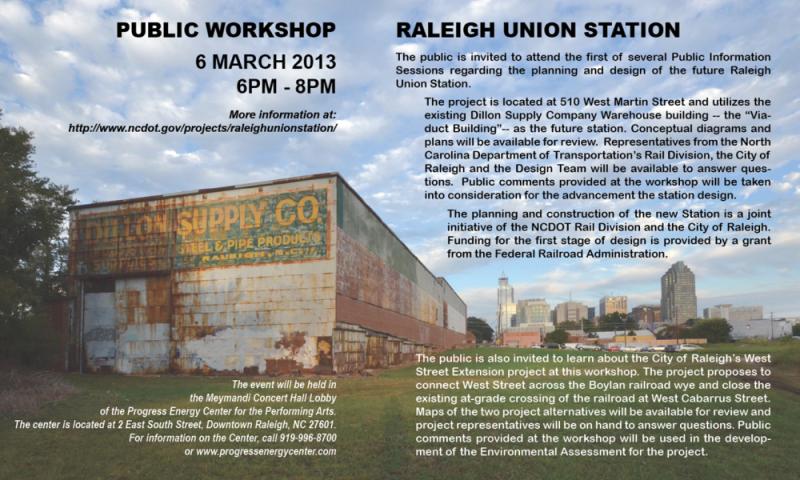
Conceptual sketch of the future Union Station
Yesterday, a group from the City of Raleigh, NCDOT, and Clearscapes were hosting the public at the Contemporary Art Museum to show off some updates to Raleigh’s upcoming Union Station. This is part of an ongoing effort for citizens to take part in the design process of downtown’s new train station.
The last public meeting was only two months ago so I wasn’t expecting much to be honest. Clearscapes did have slightly new renderings and one interesting slide about the feedback that they have collected.
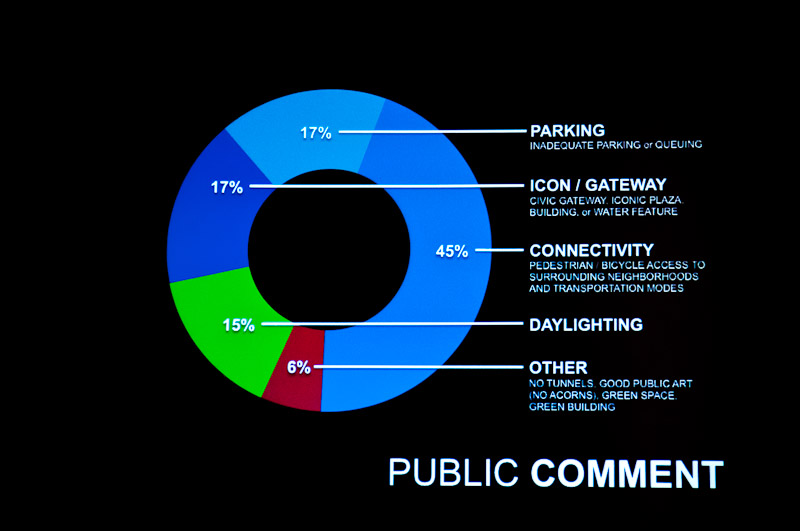
Almost half of the comments collected so far are related to connectivity, mainly pertaining to pedestrian and bicycle traffic. The design of the new station is attempting to be easily accessible by a variety of modes and from many different directions. In addition to obvious connectivity off West Street, the architects are tossing around the idea of connecting a walkway westward up to Boylan Avenue.
Parking was another concern from the public. There’s no real concrete solution for Union Station parking at this time. The site plans show that only 36 spaces can fit on the site. All parties agree that this is far too few to adequately serve the station. There’s work being done behind the scenes to try and find a solution in the surrounding properties so more details are to come for sure.
The rest of the comments cover a couple of other things. People are interested in really making the entrance way an iconic space, especially the plaza. Use of natural light was also commented on and is leading to designs with more glass.
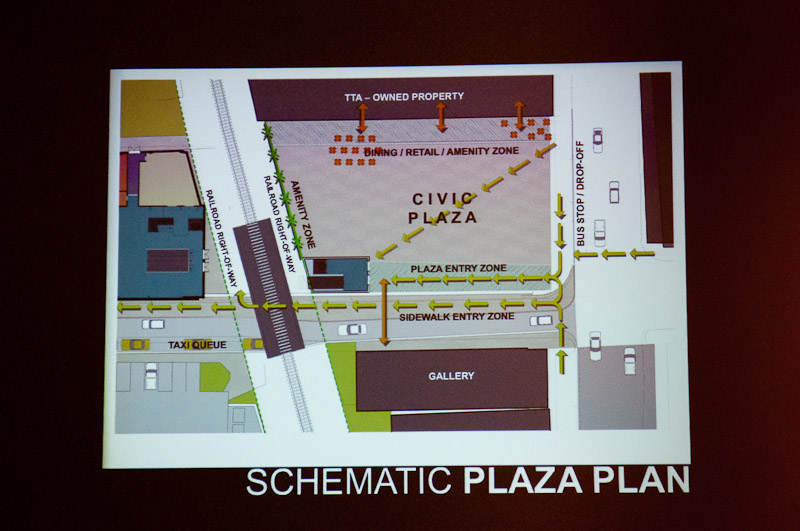
Here’s a new sketch that I haven’t seen before that shows the gateway from the civic plaza. The cross section shows the possible flow of pedestrians from the plaza and into the station. It also shows how the station will work “around” the in-use freight track that runs between the plaza and the station.
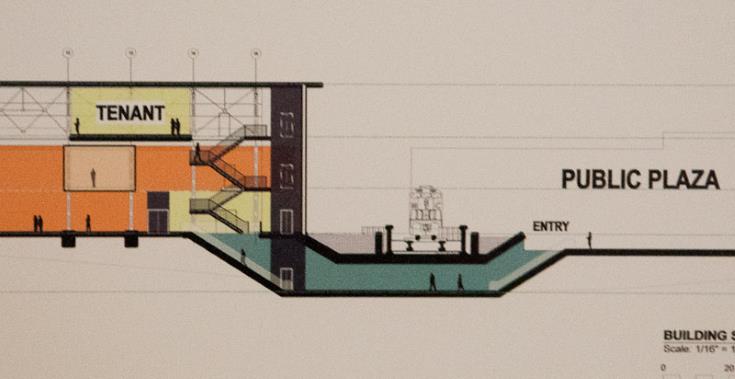
Here’s the latest site plan for you to geek over. Click on it to see it large. I didn’t realize how long the Amtrak platform really is.

